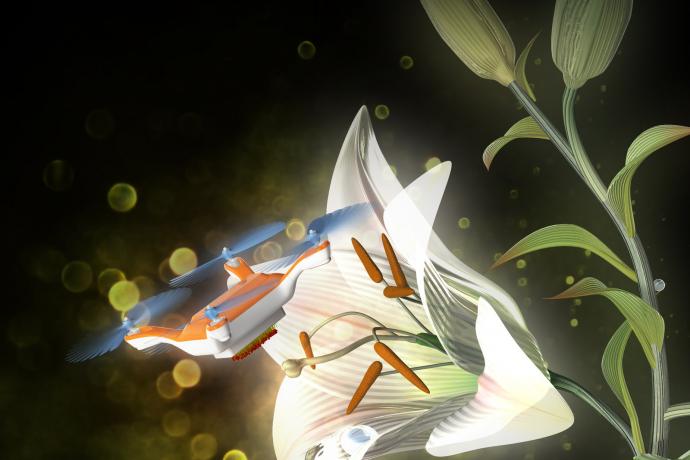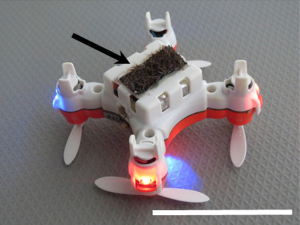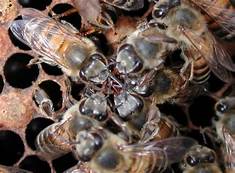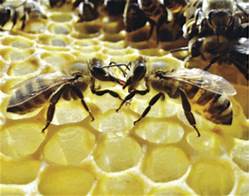
I have always had great affection for the Terminator movies; I love a story about the interface and conflict between humans and machines. I sometimes wondered what the energy source was for the machine army, who mined the metal and other pedestrian concerns unrelated to a story of valor and romance.

I had the same thoughts when I learned that Eijiro Myiako was developing insect-sized drones capable of artificial pollination. Researchers Japan’s National Institute of Advanced Industrial Science and Technology worry about the decline of bees and other pollinators and have looked to technology for a fix.
As shown above, Miyako’s team sent a little quad-copter to pick up pollen from a lily after which it deposited the pollen on the female part of another flower.  The little drones were equipped with gel stuck onto horse hair. An electrical charge kept pollen grains attached during flight. Could this be a solution to the potential extinction of bees?
The little drones were equipped with gel stuck onto horse hair. An electrical charge kept pollen grains attached during flight. Could this be a solution to the potential extinction of bees?
Not really. For example, there are one million acres of almond trees in California. Marla Spivak, an entomologist at the University of Minnesota explains, “Every flower needs to be pollinated to set the nut. Two million colonies of bees are trucked in to pollinate the almonds, and each colony has between ten and twenty thousand foragers. How many robots would be needed?” In addition, the 20,000 species of bees are adapted to different plants; some better pollinators for tomatoes; others for alfalfa, and so on. The programming and control of millions of artificial bees attuned to the needs of plants are mind numbing. link
And could the little robo-drones communicate? Bees can. Among other communication skills, a scout will return to the hive and perform a little dance that illustrates to other bees the direction of a discovered food source and its distance from the hive. link In addition, bees are great chemists and communicate with each other using pheromones. The queen can produce pheromones to control reproduction encouraging or discouraging the male bees in the hive. Worker bees use pheromones to defend the hive: when a bee is forced to sting, the bee alerts all fellow workers who then meet any threat in great numbers.
could the little robo-drones communicate? Bees can. Among other communication skills, a scout will return to the hive and perform a little dance that illustrates to other bees the direction of a discovered food source and its distance from the hive. link In addition, bees are great chemists and communicate with each other using pheromones. The queen can produce pheromones to control reproduction encouraging or discouraging the male bees in the hive. Worker bees use pheromones to defend the hive: when a bee is forced to sting, the bee alerts all fellow workers who then meet any threat in great numbers.
 One research team “found that antenna deflections induced by an electrically charged honey bee wing are about 10 times the size of those that would be caused by airflow from the wing fluttering at the same distance—a sign that electrical fields could be an important signal.” link
One research team “found that antenna deflections induced by an electrically charged honey bee wing are about 10 times the size of those that would be caused by airflow from the wing fluttering at the same distance—a sign that electrical fields could be an important signal.” link